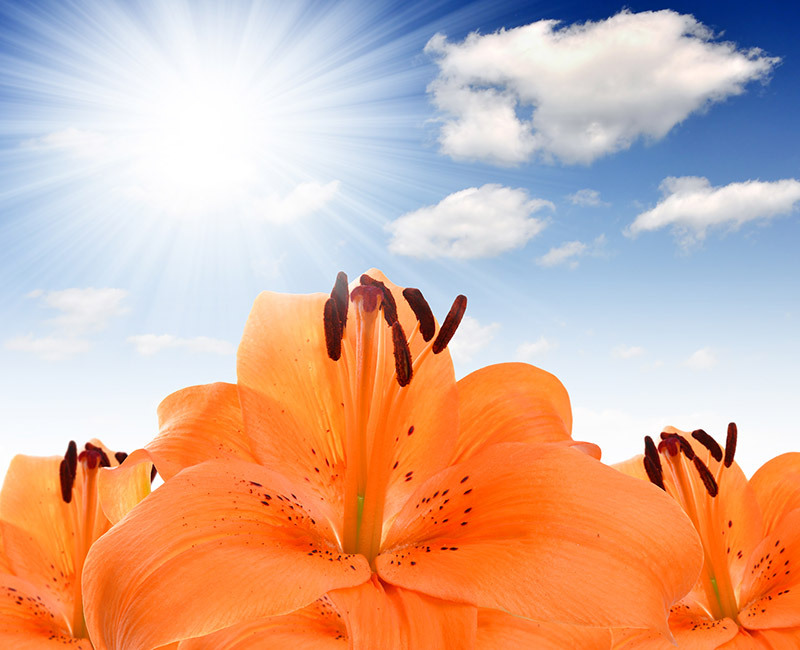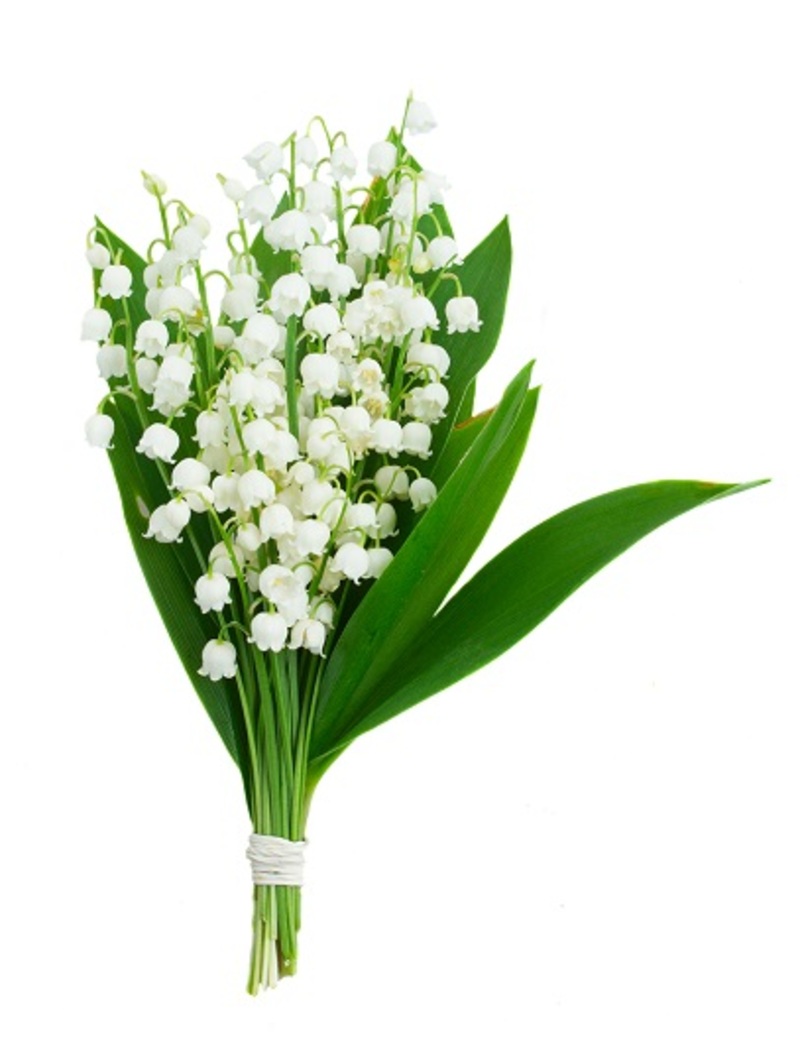A Step-by-Step Guide to Healthy Poinsettias
Posted on 17/08/2025
A Step-by-Step Guide to Healthy Poinsettias
Poinsettias, with their vibrant red, pink, and white bracts, are quintessential ornaments of the holiday season and beyond. However, growing and maintaining healthy poinsettias require more than just occasional watering. In this comprehensive, SEO-optimized guide, we'll walk you through every phase--from selection to care and problem solving--ensuring your poinsettia plants remain robust and beautiful all year long. Whether you're an expert gardener or a curious beginner, follow this detailed plan to keep your poinsettias thriving!
Why Choose Poinsettias for Your Home?
Poinsettias (Euphorbia pulcherrima) are more than just festive plants. Their colorful foliage brightens up interiors, purifies air, and adds a natural touch to your living space. Native to Mexico, poinsettias symbolize good cheer and celebration. With proper poinsettia care, they can reward you with months of vibrant color and even rebloom next season. This step-by-step tutorial is your key to unlocking their full potential.

Step 1: Selecting the Healthiest Poinsettia Plants
Your journey to a healthy poinsettia begins at the store or nursery. Picking the right specimen is crucial for long-term success.
Tips for Choosing Quality Poinsettias:
- Look for rich, full colors: Select poinsettias with strong, vibrant bracts (the colored leaves) that completely cover the top of the plant.
- Inspect the true flowers: The tiny yellow buds (cyathia) at the center should be present and not shedding pollen, as this means the plant is still fresh.
- Healthy foliage: Leaves should be dark green, extending well down the stem, without spots or signs of wilting.
- No evidence of pests: Check beneath the leaves for any sticky residue, insects, or webbing.
- Strong and upright stems: Avoid floppy or leggy plants, which are prone to disease and breakage.
- Even, moist soil: The soil should be slightly damp, not waterlogged or bone dry.
Step 2: Bringing Your Poinsettia Home Safely
Poinsettias are sensitive to cold drafts and temperature swings. Make sure your purchase journey keeps these plants protected:
- Use a protective sleeve: Have the nursery wrap your poinsettia, especially in cold weather.
- Minimize time outdoors: Transport the plant straight home; do not leave it in a cold car.
Step 3: Ideal Placement in Your Home
Upon arrival, finding the perfect home for your poinsettia is the next essential step to healthy poinsettias.
Optimal Conditions for Poinsettias:
- Bright, filtered light: Position near a window where the plant receives at least 6 hours of indirect sunlight daily, but avoid direct afternoon sun which can scorch the leaves.
- Temperature control: Poinsettias prefer indoor temperatures between 65?F-75?F (18?C-24?C) during the day and not below 60?F (15?C) at night.
- Away from drafts: Never place your poinsettia near heaters, fireplaces, or cold drafts from doors or windows.
- Humidity matters: These plants appreciate moderate humidity levels. If your home is dry, mist gently or use a humidity tray.
Step 4: Proper Watering Routine
Watering is vital for healthy poinsettias, but both over- and underwatering are common pitfalls.
How to Water Your Poinsettia Correctly:
- Check soil moisture regularly: Stick your finger one inch into the soil--it should feel slightly moist but never soggy.
- Water deeply but infrequently: When soil is dry to the touch, water thoroughly, allowing excess water to drain from the bottom.
- Empty drainage trays: Never let your poinsettia sit in standing water, as this causes root rot.
- Avoid overhead watering: Water directly onto the soil to prevent bract staining or fungal diseases.
- Adapt with the seasons: Poinsettias require less water in winter and more as days lengthen and temperatures rise.
Tip: Use room-temperature water to avoid shocking the roots.
Step 5: Feeding and Fertilizing Your Poinsettia
Nourishing your plant is crucial for continued health and re-blooming.
When and How to Fertilize:
- Wait until after bloom: Do not fertilize while poinsettia is in full color during the holiday period.
- Start in spring: Begin feeding once new growth appears. Use a balanced, water-soluble fertilizer (such as 20-20-20) every 3-4 weeks.
- Follow label directions: Never over-fertilize, as this can burn the roots or cause leaf drop.
- Cease feeding in fall: Stop fertilizing in early fall when preparing your poinsettia for its blooming cycle.
Step 6: Pruning and Repotting Poinsettias
To keep your poinsettias healthy and bushy, annual pruning and occasional repotting are important.
Pruning Guide:
- After holiday color fades: Cut plants back to about 6 inches from the soil, leaving a few leaves on each stem.
- Pinch back in summer: Regularly pinch back tips to promote bushy growth, but stop by late August to encourage flower bud formation.
Repotting Instructions:
- When roots outgrow the container: Choose a new pot 2 inches larger than the current one.
- Use clean, free-draining soil: Avoid compacted or reused soils to prevent disease.
- Gently loosen roots: Be careful not to damage the delicate roots during transfer.
Step 7: Encouraging Poinsettia Re-bloom
Did you know you can make your poinsettia rebloom for the next holiday season? Healthy poinsettias can be coaxed into regaining their signature color with some patience and a specific regimen.
How to Re-bloom Your Poinsettias:
- In September or October: Provide 14-16 hours of complete darkness each night for 8-10 weeks. Use a large box or place the plant in a dark closet from evening until morning. This is called "photoperiodic induction."
- During the day: Bring your poinsettia back into bright, indirect sunlight for the remaining hours.
- Resume normal care: Once you see colored bracts forming, end the dark treatment and continue with typical watering and light.
Consistency is essential--missing even one night may delay color change!
Step 8: Poinsettia Health Troubleshooting
Sometimes, even with the best of care, issues arise. Here's how to recognize and remedy the most common poinsettia health problems:
Common Issues & Solutions:
- Wilting or leaf drop: Caused by temperature shock, underwatering, or overwatering. Assess placement and review your watering habits.
- Yellowing leaves: Frequent result of poor drainage or root rot. Ensure pots drain well and allow soil to dry between waterings.
- White powder or spots: Signs of powdery mildew. Improve air circulation and avoid overhead watering.
- Sticky residue or tiny bugs: Aphids or whiteflies. Treat with insecticidal soap or neem oil spray.
- Poor color or stunted growth: Usually lack of light. Move to a brighter location but avoid direct sunlight.
Extra Tips for Even Healthier Poinsettias
- Rotate the plant regularly to encourage even growth on all sides.
- Keep poinsettias away from pets and small children: While not deadly, the sap may irritate skin and upset sensitive tummies.
- Decorative foil warning: If your plant comes wrapped in foil, punch holes in the bottom to allow proper drainage.
- Monitor with the seasons: Adjust light, water, and humidity as home conditions change through the year.
Myths and Facts: Are Poinsettias Really Poisonous?
Rumors have long surrounded poinsettias about their toxicity. The truth? Healthy poinsettias are only mildly toxic if ingested in large amounts, usually causing no more than mild digestive upset or skin irritation. As a precaution, keep out of reach of pets and children, and wash hands after handling.
Summary: The Path to Robust and Vibrant Poinsettias
Growing healthy poinsettias is an achievable goal for any plant lover. From strategic selection to consistent care and attention, your poinsettias can thrive, provide beauty through the winter, and even come back stronger year after year.
- Pick quality plants with fresh, full bracts and no visible health issues.
- Protect plants from cold and set them up in a well-lit, draft-free location.
- Water moderately and allow for excellent drainage.
- Feed only outside bloom period and prune after holidays to encourage bushiness.
- Attempt re-blooming with careful photoperiod treatment in the fall.
With these step-by-step instructions to healthy poinsettias, your home can enjoy the colorful radiance and charm of these iconic plants for seasons to come!

Frequently Asked Questions About Poinsettia Care
1. How long do healthy poinsettias last?
With proper care, poinsettias can remain attractive for four to six months indoors, and even longer if rebloomed or planted outdoors in frost-free zones.
2. Is poinsettia sap dangerous?
Poinsettia sap may trigger mild skin irritation or gastrointestinal discomfort but is rarely harmful. Wash your hands and keep away from pets and children as a precaution.
3. Can I replant poinsettias outside?
In USDA zones 9-11, healthy poinsettias can thrive outdoors as perennials. Gradually acclimate them to outside conditions after risk of frost has passed.
4. Why is my poinsettia losing leaves?
Leaf drop is usually due to overwatering, underwatering, exposure to drafts, or temperature swings. Reevaluate their environment and watering practice.
Conclusion
Caring for poinsettias can be simple and rewarding when you use the right techniques. This step-by-step guide to growing healthy poinsettias has outlined essential tips for buying, caring, troubleshooting, and even re-blooming these beloved plants. Follow these detailed instructions, and you'll enjoy lush, vibrant poinsettias that brighten your home throughout the year. Start your poinsettia journey today for lasting color and festive cheer!







